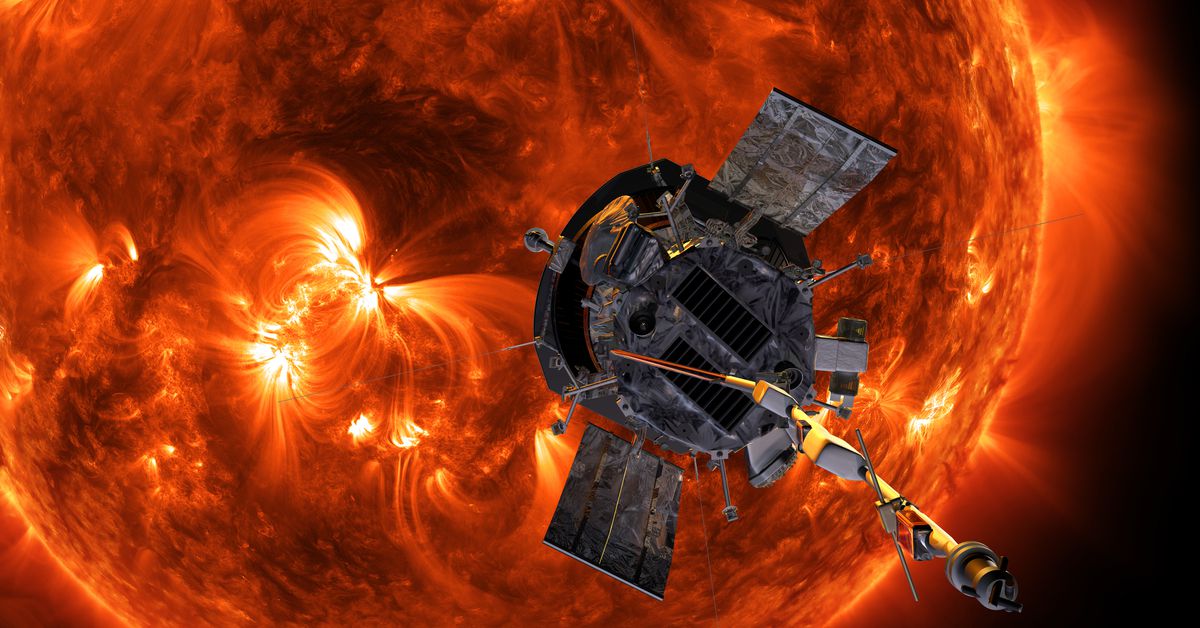NASA’s Parker Solar Probe Successfully Flies by the Sun
On December 26th, NASA received confirmation from its Parker Solar Probe that it had successfully flown by the surface of the Sun and is operating normally. The probe transmitted a signal back to Earth, indicating its good health and normal functioning.
A Record-Breaking Achievement
The mission marks the closest any human-made object has ever gotten to the Sun, with the Parker Solar Probe flying just 3.8 million miles from the surface. This achievement is a testament to the ingenuity of NASA’s engineers and scientists who designed the probe to withstand the extreme temperatures and radiation near the Sun.
The Mission Timeline
The Parker Solar Probe was launched by NASA and Johns Hopkins Applied Physics Laboratory on August 12, 2018. The mission has been ongoing for nearly two years, with the close flyby being one of its most critical components. On December 20th, the probe began its approach to the Sun, with the closest encounter occurring on December 24th.
The Close Flyby
On December 24th, the Parker Solar Probe flew past the solar surface at a speed of approximately 430,000 miles per hour. During this time, mission operations were out of contact with the probe due to the intense radiation and heat emanating from the Sun. However, on December 26th, NASA received confirmation that the probe was still operational and transmitting data back to Earth.
Understanding Solar Wind and the Corona
The close flyby is expected to provide scientists with a wealth of new information about solar wind, the Sun’s heat, and how energetic particles are accelerated to near light speed. The Parker Solar Probe is designed to study the corona, the atmosphere surrounding the Sun, which gets incredibly hot due to magnetic reconnection and other processes.
The Heat Shield
To survive these close encounters, the Parker Solar Probe is equipped with a Sun-facing heat shield that reaches temperatures of around 2,500 degrees Fahrenheit. Meanwhile, the probe itself remains at a relatively cool temperature of just 85 degrees Fahrenheit. This remarkable feat of engineering allows the probe to collect data on the corona without being damaged by the intense heat and radiation.
What’s Next for the Parker Solar Probe
Now that NASA has confirmation of the mission’s success, it expects the Parker Solar Probe to send detailed telemetry data on its status on January 1st. This will provide scientists with a more comprehensive understanding of the probe’s performance during the close flyby and what it can expect in future encounters.
The Significance of the Mission
The Parker Solar Probe is one of NASA’s most ambitious missions, designed to answer fundamental questions about our Sun and its effects on the solar system. By studying the corona, scientists hope to gain a better understanding of the processes that govern the behavior of the Sun and its impact on Earth.
The Future of Space Exploration
The Parker Solar Probe is just one example of NASA’s commitment to advancing our knowledge of space and pushing the boundaries of what is possible in terms of spacecraft design. As we continue to explore the solar system, missions like this will be crucial in helping us understand the complexities of the Sun and its effects on our planet.
The Benefits of Space Exploration
The study of space has numerous benefits for society as a whole, from improving our understanding of the universe to developing new technologies that can benefit humanity. The Parker Solar Probe is just one example of how investing in space exploration can lead to breakthroughs in science, technology, and engineering.
Conclusion
NASA’s Parker Solar Probe has successfully flown by the surface of the Sun, marking a major milestone in its mission to study the corona and understand solar wind. As we continue to explore the solar system, missions like this will be crucial in helping us answer fundamental questions about our universe and its workings.



